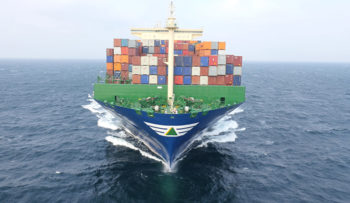
The maritime industry and broader ocean supply chain are suffering from major and costly inefficiencies due to ineffective data sharing and poor cross-industry collaboration, a new report and industry survey released by the Business Performance Innovation (BPI) Network in coordination with Navis and XVELA, both part of Cargotec, shows.
However, the shipping industry is in the midst of a significant transformation to increase efficiency, visibility and customer services, according to the study.
The study, entitled “Competitive Gain in the Ocean Supply Chain: Innovation That’s Driving Maritime Operational Transformation,“ is based on a global survey of more than 200 executives and professionals from terminal operators, carriers, logistics providers, vessel owners, port authorities, shippers, consignees and other members of the global ocean supply chain.
The findings indicate that importers, exporters, shipowners and other stakeholders suffer from poor visibility and predictability around shipments and are losing money due to a lack of partner synchronization and insufficient data insight.
However, there is recognition, particularly among industry leaders interviewed, that digitization and mindset shifts are afoot, and will be a boon to all players in the industry.
“Everyone benefits from collaboration and data sharing. It starts with the customers and moves to the carriers, then the terminal operators, vendors, freight systems, truck companies, and keeps going down the line. Closer collaboration is a compelling value proposition for each supply chain partner,” Andreas Mrozek, Global Head Marine & Terminal Operations for the Hamburg Süd Group, said.
Ninety percent of survey participants said real-time data access and information sharing was important to increasing the efficiency and performance of the shipping industry. Some 82 percent said the industry needs to improve supply chain visibility, according to the survey.
The push for improvements will likely come from a combination of forces, according to industry executives. Shippers will push for better operational visibility, alliances will demand better ways for their carrier members to share information to improve efficiencies and customer service and terminals and port authorities will be under pressure to increase utilization and optimize existing infrastructures.
Despite hurdles, stakeholders agree that real-time access and sharing of information is vital.
On average, surveyed executives estimated that each of a wide range of ocean supply chain processes could be improved by as much as 66 percent and no less than 55 percent if the industry updated its IT systems and improved its ability to share data with other members of the supply chain.
“Our study underscores the critical need for the shipping industry to improve collaboration and visibility through the adoption of new technology-driven models and processes,” Dave Murray, Head of Thought Leadership for the BPI Network, explained.
“Perhaps partly because the industry has been preoccupied and constrained by its economic challenges—but also because many of its members are just plain resistant to change—the industry has been far too slow to enter the digital age,” Murray added.
According to respondents, the areas most in need of improvement are carrier to terminal coordination, supply chain visibility and information sharing, terminal operations, cargo flow visibility and predictability, and coordination across carrier alliances.
“The findings of the study are consistent with what we are hearing in the field from some of the biggest carriers and terminals in the world – namely that coordination, collaboration, and visibility across the supply chain need to improve through a common cloud platform and network,” Guy Rey-Herme, XVELA CEO and President, noted.
The report indicates that industry resistance to change, coupled with the industry’s aging and inflexible IT systems, are key impediments to improving visibility and collaboration. Some 54 percent of respondents said the industry being “slow to change” was one the biggest roadblocks to improving collaboration, while 49 percent cited the cost and complexity of legacy systems.
At the same time, many in the industry believe that change is coming. Some 46 percent of respondents said their companies were either investing significantly in new technologies or significantly increasing those investments.
“We are seeing accelerating technology innovation and upgrades as terminals and carriers alike embrace the age of digitization,” Benoit de la Tour, President of Navis and Head of the Software Business at Kalmar, pointed out.
Copyright Ships & Ports Ltd. Permission to use quotations from this article is granted subject to appropriate credit given to www.shipsandports.com.ng as the source.
